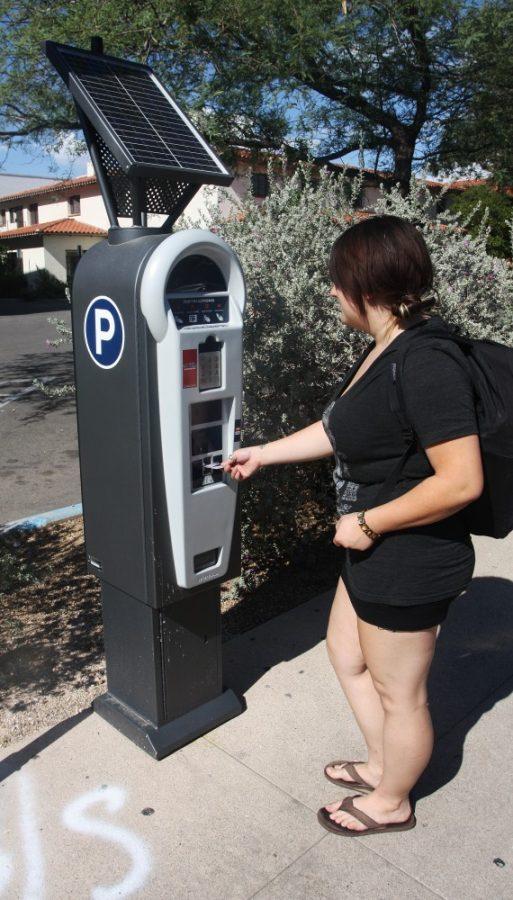Returning students to the UA have noticed a big change in the parking meters on campus — they no longer accept change.
Beginning in August, UA Parking and Transportation Services replaced about 400 standard coin-operated meters on campus with 35 new digital solar-powered stations.
“The meters are going to be used to provide better customer service, better efficiency and better service for the campus, but also to our visitors too,” said Bill Davidson, director of marketing and communications for PTS.
Each new parking station cost about $5,000 and is used for eight to 12 nearby parking spaces. But one of the biggest differences from their old-meter counterparts is that they only accept credit cards and CatCards, no more change.
“With the old meter we had to go out every day and collect coins, which took several hours and then we had to still take the money back and count it,” Davidson said. “In the long run, the new meters are going to save quite a bit of money by streamlining the operation.”
According to Davidson, the proposal to change the meters on the UA campus came about after the solar stations were tested at the UA’s Phoenix Biomedical Campus, with positive feedback from users. However, the new system can be confusing for those who are accustomed to the old meters.
“I like the idea that you don’t need to have quarters all the time, but I don’t like that I can’t figure out how to use it right now,” said Maggie Christy, a communication senior, when trying to use the station for the first time.
“It’s confusing using it for the first time but having to bring change around was a hassle,” Christy added.
Since the beginning of school, the solar stations on average host around 800 transactions a day. They also allow users to pay in 20-minute increments and add additional time at any parking solar station on campus.
“Because they provide so many payment options for the meters, we think the end result is going to be people getting fewer citations and finding them (the meters) a whole lot easier to use,” said Mark Napier, an associate director for PTS.
PTS plans to recycle old meters by giving them to other universities around the nation.
Davidson also said some meters would be kept for nostalgic purposes and may be used in the future.









